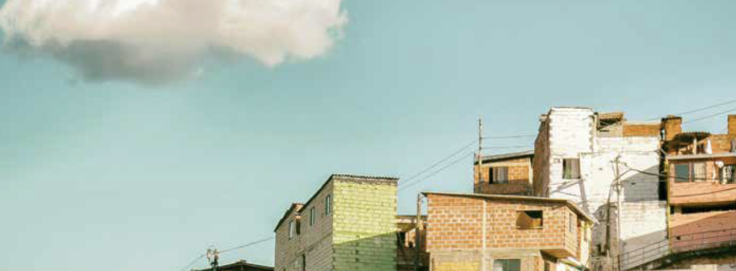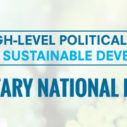
Search
Incorporating gender into the Business Multidimensional Poverty Index: The Wise Responder initiative

SOPHIA Oxford has developed a technological tool for businesses to collect and analyse data on the deprivations faced by employees and their families. This tool allows a company to conduct an online census of its employees, and analyse the data collected. The tool implements the Wise Responder questionnaire, which collects information on all deprivation indicators included in the national measure of multidimensional poverty, on income, on debt and a few additional questions to assess the effect of the COVID-19 crisis on the household. The Wise Responder questionnaire also includes questions aimed at capturing gender gaps.
Once the data is collected, the tool provides businesses with standard diagnostic reports. The reporting of the Wise Responder census results also includes a dashboard focused specifically on gender gaps. By taking into account gender inequalities, the tools of the business MPI (bMPI) better track barriers that are related to gender and support businesses in implementing more inclusive action plans to reduce poverty.(1)
A workshop in Guatemala in February of this year helped shape our thinking about which additional questions to include in our questionnaire in order to capture gender issues relevant in Guatemala.(2) Following that workshop, we added a few questions to capture gender differences in the use of technology, home ownership, hours of work, and the use of credit.
The digital gap is very important because, if not addressed, it will most likely lead to a gap in employability in the near future. For that reason, the questionnaire includes questions about the frequency and type of use of the internet (e.g. communication by email, posting on social media, attending school, shopping, banking operations), as well as questions about computer skills (e.g. ability to use a word processor like Word, ability to use a spreadsheet, and the ability to download and install software programmes).(3)
In terms of home ownership, in the cases where the house is owned by the household, we ask the employee to identify the owner or owners of the household. This way we will be able to identify not only the potential gender gap in home ownership, but also assess the specific position of the employee (e.g. home owner vs. child of home owner).
Regarding hours of work, the questionnaire asks employees how many hours they spend on average working on paid work and doing domestic chores per week. Although we understand such data will have some degree of measurement error, we hope it will provide some insight into the overall work burden of men and women employees. In addition, it might also be useful to design interventions taking into account the general time commitments of employees.
SOPHIA Oxford’s technological platform will include a gender dashboard aimed at raising awareness among company managers about gender gaps.
In order to try to shed some light on the hypothesis that men and women use credit for different purposes, we added a question about the purpose of each loan and credit. However, we believe that this data will have to be interpreted very carefully for many reasons, as, for instance, individual loans might actually result from joint decisions.
SOPHIA Oxford’s technological platform will include a gender dashboard aimed at raising awareness among company managers about gender gaps. This dashboard will have three sections, one focused on the company’s employees, one focused on the adults covered by the survey (employees and their household members who are 18 or older), and a final section focused on children. As we rely on the employee as the source of information on the situation of all household members, the information regarding other household members will have to be interpreted carefully.
The dashboard section on the employees will compare, among other things:
➡ the average tenure of men and women in the company;
➡ the distribution of men and women across the company’s departments;
➡ the average years of schooling of men and women, by age and by ethnicity;
➡ the salary per hour of men and women, by years of schooling and ethnicity;
➡ the average hours spent on paid work and domestic chores by men and women;
➡ the average debt income ratio of men and women;
➡ the percentage of men and women who live in an owned house; and,
➡ the percentage of employees who live in a house at least jointly owned by a woman.
The section focused on the adult population covered by the survey will compare, among other things:
➡ the percentage of men and women using a mobile phone, a computer and internet, by ethnicity;
➡ the percentage of men and women employed, unemployed and out of the labour force;
➡ the percentage of men and women employed who work in the informal sector;
➡ the unemployment rate among men and women by years of schooling and ethnicity;
➡ the reasons why men and women are out of the labour force; and,
➡ the number of men and women who lost their job and whose income fell due to the COVID-19 crisis.
The section focused on children will compare, for example, girls and boys’ school attendance, child work and use of technology.
The SOPHIA platform will generate these reports automatically for each company. SOPHIA Oxford has now expanded to Guatemala and Central America. It partnered with OPHI in the publication of a Latin American Briefing paper on the global MPI and COVID, with the support of IDRC. IDRC also supported the process of expansion to Chile and Colombia, which will be operational in early 2021. In each of these projects, gender will be of particular interest. By incorporating local, national academics and researchers in the process, we help to foment ongoing local capacity and innovative research.
(1) The effort to incorporate a gender focus into the bMPI methodology was funded by the International Development Research Center. As part of Canada’s foreign affairs and development efforts, IDRC invests in knowledge, innovation, and solutions to improve the lives of people in the developing world.
(2) The workshop was co-hosted with UNDP, a long-term OPHI partner. Participants ranged from Guatemalan academics and NGO leaders to consultants and international donors.
(3) In the questionnaire, which is already being implemented in Guatemala, we measured the digital gap by comparing the percentage of women and men who used a mobile phone, a computer and accessed the internet during the two weeks preceding the census.
This article was published in Dimensions 11
















